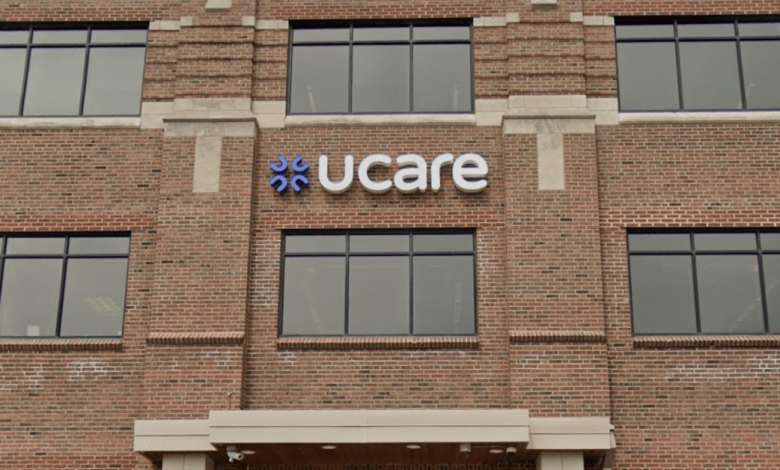UCare Shutting Down in 2026 as Mounting Losses Force Exit from Market

In a move that will reshape parts of Minnesota’s insurance landscape, Minneapolis-based nonprofit health insurer UCare announced that it will wind down operations in 2026 and transfer many of its Medicaid and individual-market contracts to fellow Minnesota insurer Medica. The decision follows a year of escalating financial losses — particularly in Medicare Advantage and Medicaid products — and a strategic reassessment that found UCare unable to sustain those business lines in the current market environment.
The headline: what happened and who’s affected
On November 17, 2025, UCare and Medica issued joint statements announcing a transaction under which Medica would acquire contracts and assets tied to UCare’s Medicaid and individual-and-family (MNsure/ACA) business. The deal — subject to regulatory approvals and customary closing conditions — is expected to close in the first quarter of 2026, and will set the stage for UCare to wind down remaining operations next year. Officials say the arrangement is intended to preserve coverage continuity for affected members while UCare “runs out” contractual obligations during a transitional servicing period.
Industry reporting places the number of affected lives at roughly 300,000 Minnesotans enrolled in UCare Medicaid and individual plans — a substantial footprint for a regional nonprofit insurer and a key reason why regulators and community leaders are watching the transition closely. Medica has said it will need additional staff to handle the enrollment influx; UCare has acknowledged the potential impact on its roughly 1,450 employees.
Why UCare decided to exit — the financial squeeze
UCare’s publicly stated rationale — echoed by reporting from Minnesota news outlets — centers on mounting and unsustainable financial losses across some of its core products. The nonprofit already announced earlier in 2025 that it would stop offering Medicare Advantage plans for 2026 after experiencing “significant financial losses” there, driven by rapidly rising medical and pharmacy costs that have squeezed margins for many insurers nationwide. That narrowing of Medicare revenue, combined with ongoing challenges in Medicaid payment rates and the insurer’s limited diversification beyond government programs, left UCare with a smaller toolbox to absorb losses and pursue long-term stability.
An internal and external reading of the situation suggests a confluence of pressures: increasing utilization and drug costs, tightened state and federal payments for Medicaid, and a strategic bet on scaling Medicare Advantage that didn’t pay off quickly enough. For a mission-driven, regionally focused nonprofit like UCare, those compounded hits can quickly erode the reserves and operational flexibility needed to compete. Regulators and market analysts note that while larger, diversified insurers can cross-subsidize or reprice more aggressively, smaller players are more vulnerable to cyclical and structural cost shocks.
What UCare and Medica say
UCare’s leadership framed the transaction as a way to protect members and avoid abrupt coverage disruptions. Hilary Marden-Resnik, UCare’s president and CEO, said the agreement would “preserve access to coverage for Minnesota’s most vulnerable members,” acknowledging that the nonprofit had been exploring options to transition members to another community-focused organization with a similar mission. UCare has also emphasized support measures for members facing plan closures — including special enrollment rights and enrollment assistance events.
Medica presented the acquisition as an expansion of its community-focused mission and an operational response to meet the needs of additional Medicaid and ACA enrollees. The company said the deal will bring more customers into its system and that it will work with regulators on a smooth transition. Both organizations stressed that day-to-day care for members should not be interrupted during the transition and that providers contracted with UCare would continue to be paid during any “runout” period while contractual obligations are settled.
Immediate consequences for members, providers, and employees
For UCare members, the most immediate and practical issue is plan continuity. UCare’s website and member communications confirmed that UCare Medicare Advantage plans will end on Dec. 31, 2025, and that affected Medicare members have special enrollment rights to choose alternate plans with extended deadlines into early 2026. For Medicaid and individual marketplace members, Medica has indicated it will accept transitions for many plans in 2026, subject to the terms of the transaction and regulator approvals. UCare has promised outreach, virtual and in-person help, and enrollment resources to guide people through choices and avoid coverage gaps.
Providers who participate in UCare networks will want clear communications about contract assignments, claims processing, and credentialing under Medica. Historically, transitions like this require careful coordination so that provider payments and authorizations continue without interruption; both insurers have said they will work with provider networks during the runout. Nevertheless, providers often report administrative friction during such transitions — delays in credentialing or shifts in prior-authorization rules — so clinics and hospitals should proactively engage with payer relations teams.
UCare employees face uncertainty. While Medica indicated it will need more staff to handle enrollment activity, the joint statements did not commit to preserving specific UCare jobs. The total headcount at UCare — reported at about 1,450 people — means layoffs or reassignments could be significant unless Medica hires broadly or the runout operations sustain a subset of roles. Labor advocates and local officials will likely push for transparency around severance, redeployment options, and community impact.
Regulatory scrutiny and timeline
Because the transaction involves Medicaid contracts and marketplace business, state regulators — including Minnesota’s Department of Human Services and the state insurance regulator — will review the deal. Federal oversight may also apply where Medicare or federal marketplace rules intersect. Both insurers emphasized the transaction is subject to regulatory approvals and customary closing conditions; industry reporting projects a close in early 2026 if approvals come through without unexpected complications. Regulators will evaluate whether the deal preserves access, maintains network adequacy, and protects members’ benefits and provider relationships.
The timeline for implementation includes a “runout” period in 2026 during which UCare remains responsible for servicing certain legacy obligations while Medica assumes operational responsibility for active member plans. For members, the most salient dates to watch are the Dec. 31, 2025 end date for UCare Medicare Advantage plans and the special enrollment windows tied to plan closures and CMS guidance — UCare has directed members to enrollment resources and extended deadlines into February 2026 for some Medicare choices.
Wider market implications
UCare’s exit highlights a broader trend of consolidation and retrenchment in regional insurance markets, especially among insurers heavily concentrated in government-funded programs. When a regional nonprofit with a decades-long presence exits, it can change competitive dynamics: premiums and plan choices in certain counties could shift, provider negotiating leverage may adjust, and other insurers could seek to expand. Observers will track whether Medica’s expanded footprint leads to more market concentration in Minnesota and what that could mean for pricing and access, particularly for low-income and medically complex populations who depend on Medicaid and subsidized marketplace coverage.
For policymakers, UCare’s situation raises questions about payment adequacy in Medicaid and how state rate-setting or care management programs might need to evolve to prevent service disruption. Advocates for vulnerable populations will press regulators to ensure continuity and maintain provider networks, while budget hawks may watch for any spillover effects on state finances if enrollment patterns change.
Lessons and context: why nonprofit doesn’t always mean insulated
UCare’s story is a reminder that nonprofit status does not immunize an insurer from market forces. Nonprofit payers still face actuarial realities: premium adequacy, utilization shifts, pharmacy costs, and the capital needed to absorb operating losses. UCare’s attempt to scale Medicare Advantage amid rising costs was described by analysts as an ill-timed strategic bet: growth in a product line that soon became more expensive undermined the financial cushion needed to sustain losses elsewhere. For other mission-driven insurers, the episode may prompt a reexamination of risk diversification, reserve strategy, and the feasibility of blending public-program focus with expansion into competitive commercial lines.
What members should do now
If you’re a UCare member, here are immediate steps to reduce risk of coverage disruption:
- Read any letters or emails from UCare carefully. UCare has mailed plan-closure notices and posted FAQs that explain timelines and special enrollment rights.
- For Medicare members: note that UCare Medicare Advantage plans end Dec. 31, 2025. Use the Medicare Annual Enrollment Period (or special enrollment windows tied to plan closures) to select a new plan — and keep the CMS letters UCare sent as proof of special enrollment rights if you need them.
- For Medicaid and MNsure members: look for communications from UCare and Medica about how and when your coverage will move. Attend enrollment help sessions or contact a navigator for in-person support.
- Confirm prescription authorizations and specialty drug coverage so there are no interruptions in medication access during the transition. Speak with your pharmacy and provider to confirm how claims will be handled.
Closing perspective
The winding down of UCare — a nonprofit insurer with roots stretching back decades in Minnesota — marks a consequential shift in a regionally important corner of the health insurance market. For roughly 300,000 enrollees, the change will mean new plan IDs, new customer-service numbers, and possibly new provider networks. For employees and local providers, it will bring uncertainty. For the market and policymakers, it is a cautionary episode about the fragility of mission-oriented payers in an era of rising clinical and pharmaceutical costs.
Both UCare and Medica have pledged to prioritize members’ continuity of care during the transition. Yet the ultimate test will be in implementation: regulatory approvals, contract assignments, provider network integrity, and the handling of claims and authorizations during the runout. As the transaction moves through the regulatory process early next year, Minnesotans and industry watchers will be closely tracking each step to see whether the transition preserves the access and stability the state’s most vulnerable residents rely on.




